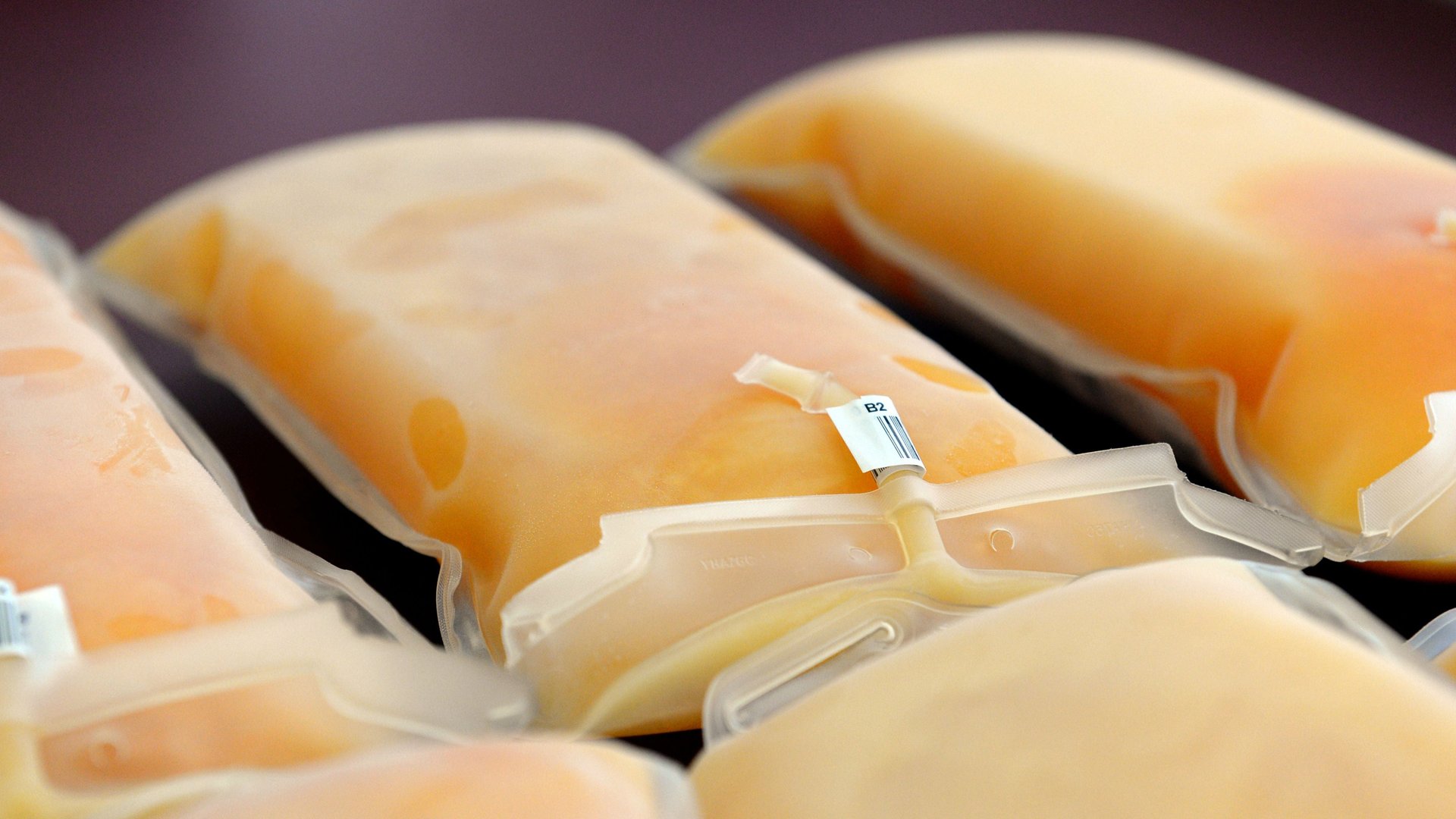A startup that charges $8,000 for young blood transfusions swears they’re worth every penny
Young blood actually does have health benefits for older adults, if you’re willing to take the word of a startup CEO who led the trial.


Young blood actually does have health benefits for older adults, if you’re willing to take the word of a startup CEO who led the trial.
At the Recode conference in Rancho Palos Verdes, California, Jesse Karmazin, who leads the small biotech startup Ambrosia, told New Scientist that he had positive results from a preliminary trial injecting older patients with younger plasma,the liquid part of blood that doesn’t contain any cells. A month after receiving a transfusion of young plasma, Karmazin says, participants had fewer chemical biomarkers indicative of heart disease, Alzheimer’s, and certain types of cancers.
The results are extremely preliminary; they not published in a peer-reviewed, and there was no control study. Ambrosia got the US Food and Drug Administration’s approval to begin conducting a controversial clinical trial in May 2016, and participants essentially pay for the unproven treatment out of pocket. For $8,000, healthy individuals over 35 can have a transfusion of plasma from someone aged 16 to 25 as part of an ongoing clinical trial.
In the Ambrosia trial, roughly 80 participants with a median age of 60 had their blood tested for around 100 different biomarkers before receiving a single transfusion, and then again a month later. On average, patients had 21% fewer carcinoembryonic antigens, a compound associated with lung, colon, and ovarian cancer; 10% fewer apolipoproteins, associated with heart disease; and 20% fewer amyloid plaques, associated with Alzheimer’s. Speaking to Quartz, Karmazin said patient reported feeling like they had more energy.
It should be noted, though, that these biomarkers do not indicate disease itself; none of the participants who enrolled in the trial were seriously ill before receiving the transfusion.
Karmazin (who studied medicine and earned an MD at Stanford University) thinks the trial’s successes have something to do with the quality of proteins in younger plasma. “Every cell is a factory, pumping out healthy proteins involved in maintaining your body,” says Karmazin. When we’re younger, cells are able to produce perfectly folded proteins, which in turn allow cells to operate at their best and produce more high-quality proteins.
As we age, though, cells start to get sloppy. The proteins they make may be misshapen—not so badly that they stop working, but bad enough to start limiting other cell function. Eventually, you get buildups of enough bad proteins that cause disease—like the amyloid plaques involved in Alzheimer’s.
In theory, introducing younger plasma, is like refurbishing a factory with all new equipment. Better proteins in plasma is better fuel for cells to perform. At this point in his research, Karmazin isn’t sure which proteins in young plasma are at work; that may be something to investigate in a future study.
Others in the field are extremely skeptical of his results. Without so much as a control group, “there is no telling what may be down to the placebo effect,” Arne Akbar, an immunologist at the University of College London, told New Scientist. When people pay a hefty price just to be a part of such a trial, it’s only natural they’d try to find ways in which it worked and may have overstated how the felt in their testimonies. That said, they can’t control what compounds show up in their blood tests.
“It is the scientific equivalent of fake news,” says Tony Wyss-Coray, a Stanford immunologist who studies the rejuvenating properties of young plasma in mice. Wyss-Coray has his own company called Alkahest with an ongoing clinical trial testing the effects of younger plasma in Alzheimer’s patients. He hasn’t yet published results.
Karmazin acknowledges that his early, unpublished results aren’t proof of young plasma’s efficacy by any means. “It’s extraordinarily expensive to do a really well-controlled study,” he says. At present, Ambrosia doesn’t have enough money to carry out a double-blind study, Karmazin says, and he doesn’t think patients would be willing to pay out of pocket to enroll in an even more expensive trial where there was a 50% chance they would be receiving a placebo.
Ordinarily, large pharmaceutical companies would swoop in to cover these costs, with the hopes of patenting the product and eventually profiting from its success. However, because plasma is a biological substance, it can’t be patented.
Karmazin says some participants have already re-enrolled in the study, and he plans on continuing his incremental work until he can lower costs to make young plasma treatment more affordable. “I really want to offer it for less,” he says. “Most business people agree that it’s good to make money, but most doctors want to treat as many people as possible. I have to do both—I have to create a real business, and I also have to help people.”